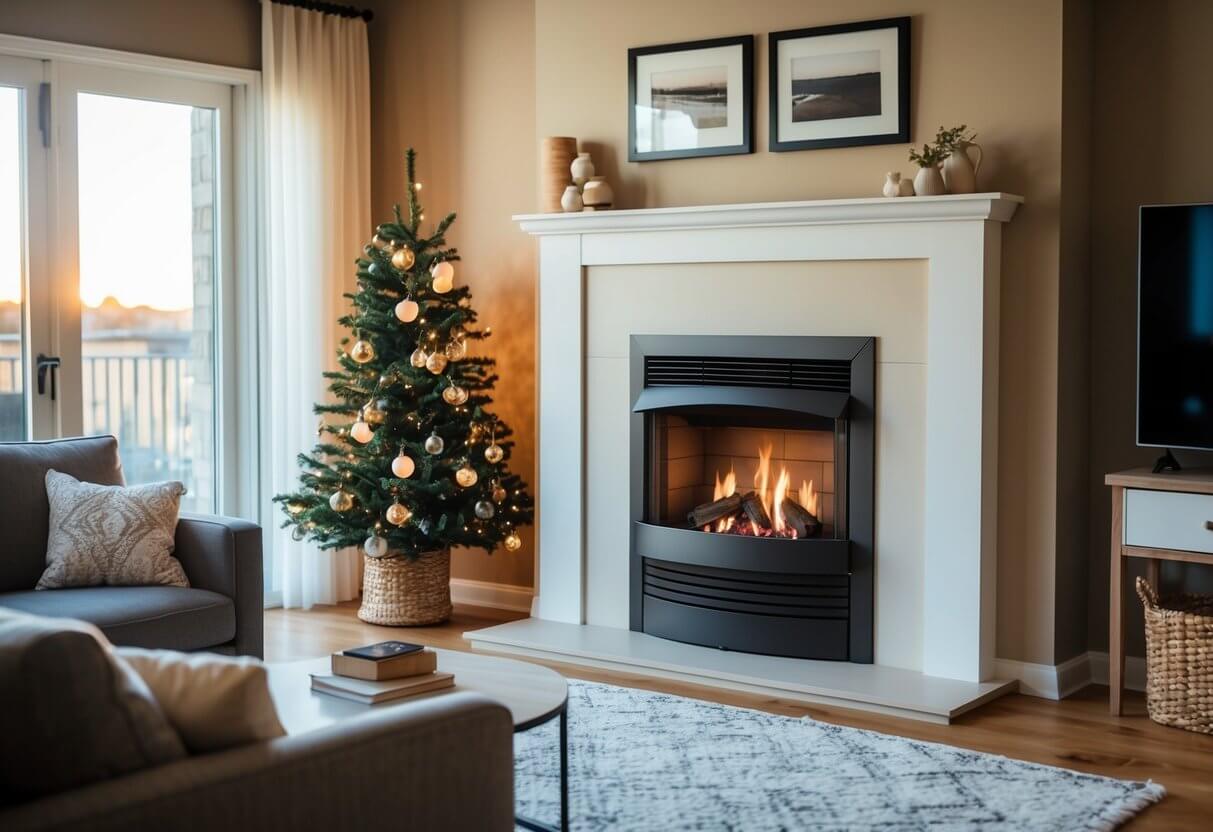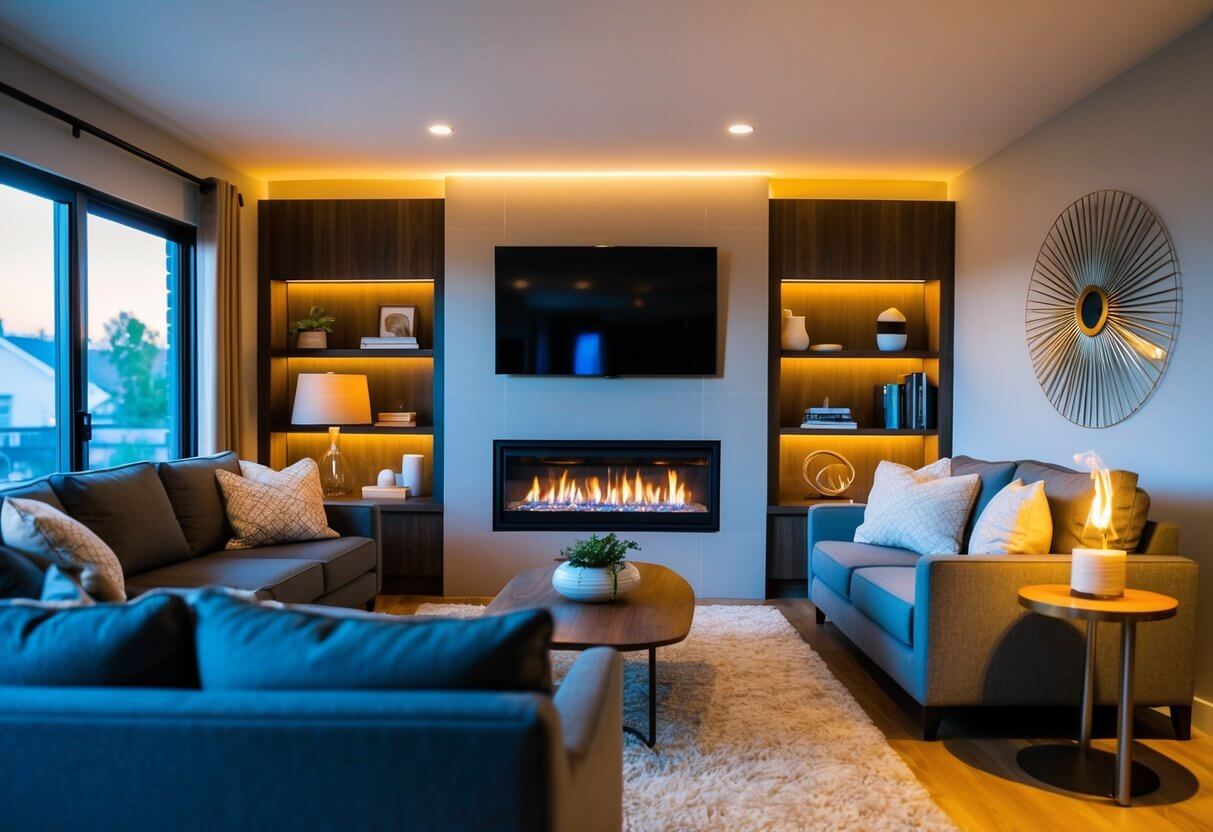Are Gas Fireplace Inserts Worth the Money?
Gas fireplace inserts have become an increasingly popular choice for homeowners looking to enhance their living spaces with warmth and style. These inserts can provide significant benefits, such as high heating efficiency and lower maintenance demands compared to traditional wood-burning fireplaces. Consumers often find them more convenient due to features like remote controls and customizable designs that add both aesthetic value and functionality to a home.
For those considering a gas fireplace insert, various factors will influence their decision. Venting options such as direct-vent and ventless inserts provide flexibility and efficiency, with ventless types offering up to 99% efficiency. While upfront costs can range widely depending on the model and installation requirements, the energy savings and added home value often offset these expenses over time.
Understanding the environmental impact and energy use of gas fireplace inserts is crucial. They produce fewer emissions than wood-burning fireplaces, making them a more eco-friendly option. With regular maintenance and proper selection, gas inserts can offer long-term reliability and comfort, providing an appealing solution for modern households.
Key Takeaways
- Gas fireplace inserts are efficient and convenient.
- Initial costs vary, but they add value and save energy.
- Environmentally friendly with minimal emissions.
Benefits of Gas Fireplace Inserts

Gas fireplace inserts offer numerous advantages, which make them a popular choice among homeowners. Enhanced efficiency, ease of operation, low maintenance, and the creation of a warm, inviting atmosphere are just a few of the compelling benefits.
Increased Efficiency and Heat Output
Gas fireplace inserts are known for their high efficiency ratings. Some models boast up to 99% efficiency, especially ventless options. This means they effectively convert gas into heat with minimal loss.
They provide substantial BTU output, allowing for effective zone heating. This can reduce the reliance on central heating, saving energy and lowering utility bills. Users enjoy consistent and reliable warmth, maintaining a comfortable environment in the home without the dry heat associated with conventional heating systems.
Ease of Use and Maintenance
Gas fireplaces are celebrated for their simple operation. Many come with remote controls, making it easy to adjust the temperature and flame height from anywhere in the room.
Maintenance is minimal compared to wood-burning fireplaces. There is no ash or soot to clean up, and they do not require annual chimney sweeps. Regular checks are usually limited to inspecting the gas lines and venting to ensure everything functions safely. This simplicity appeals to those who want warmth without the hassle of extensive upkeep.
Aesthetic Appeal and Ambiance
Beyond functionality, gas fireplace inserts add significant aesthetic value to a room. They provide real flames that mimic the appearance of a traditional fireplace, enhancing home ambiance.
Design options vary widely, allowing them to fit seamlessly into any interior style, from classic to modern. Ambiance is key—gas inserts radiate a cozy, inviting atmosphere, often becoming the visual focal point of a space. This warmth and charm can elevate the comfort level of a home, appealing to both residents and guests.
Considerations for Installation

When installing a gas fireplace insert, there are several crucial aspects to consider. The types of inserts, associated costs, building codes, and safety features all play an important role in ensuring a successful installation. Understanding these factors can help in making informed decisions.
Understanding the Types of Gas Inserts
Gas fireplace inserts come in three main types: vented, ventless, and direct-vent units. Vented units require a chimney or flue for installation, suitable for those who already have an existing fireplace. Ventless inserts do not need external venting, making them easier to install in locations lacking a chimney. They often run on natural gas or propane.
Direct-vent units are efficient because they use outside air for combustion, which enhances indoor air quality. The choice between these types depends on existing home infrastructure and desired efficiency. Each type offers specific benefits and drawbacks, so considering how each aligns with home needs is critical.
Installation Costs and Building Codes
The cost of installing a gas fireplace insert varies widely based on the unit type, home requirements, and local building codes. Installation costs generally range from $700 to $6,500. Professional installation is often necessary to comply with local building codes and ensure safe operation.
Building codes may dictate specific venting and safety measures. Compliance is paramount as it not only ensures legal operation but also enhances safety. In some regions, permits might be required, affecting the installation timeline. Planning for these variables will aid in a smooth installation process.
Safety Features and Air Quality
Safety is a top priority when installing a gas fireplace insert. Safety features like oxygen depletion sensors are crucial, especially in ventless systems, as they monitor indoor oxygen levels and shut off the unit if levels drop too low. Carbon monoxide detectors should be installed nearby to provide an extra layer of safety.
Proper installation helps minimize risks of carbon monoxide and smoke, especially with vented units that channel combustion byproducts outdoors. Ensuring the fireplace is equipped with necessary sensors and detectors can prevent potential hazards and maintain healthy air quality within the home.
Environmental Impact and Energy Use

Gas fireplace inserts and traditional wood-burning fireplaces offer different advantages and challenges in terms of environmental impact and energy use. They vary in terms of emissions and efficiency which directly affect heating costs and environmental friendliness.
Comparing Gas and Wood-Burning Fireplaces
Gas fireplaces are generally considered more environmentally friendly compared to traditional wood-burning options. They are designed to release fewer pollutants like smoke and creosote into the environment. While wood-burning fireplaces emit more particulates, gas options primarily emit carbon monoxide and some nitrogen oxides, which are vented outdoors.
Wood-burning fireplaces require firewood, leading to deforestation if not sourced sustainably. Pollution from wood fires contributes to poor air quality and health risks. In contrast, gas options do not contribute to these specific environmental issues. The key difference lies in the type of fuel and combustion process used, affecting emissions and cleanliness.
Energy Efficiency and Savings
Gas fireplace inserts tend to be more energy-efficient compared to wood-burning fireplaces. The efficiency stems from their design, which provides a consistent and controllable heat output. Gas units can achieve high energy efficiency ratings, reducing heating costs significantly over time.
Heating costs with gas fireplaces can be lower due to the consistent heat output and reduced fuel waste. Wood-burning fireplaces can be less efficient due to heat loss up the chimney and uneven burning patterns. The choice between these options should consider the balance between initial investment, operating costs, and long-term energy savings.
Product Selection and Features

Selecting a gas fireplace insert involves evaluating various design preferences and functional requirements to ensure optimal performance and satisfaction. Key considerations include size, fuel efficiency, and the incorporation of modern technologies.
Choosing the Right Fireplace Insert
When selecting a gas fireplace insert, several factors come into play. Size and heating capacity should align with the area being heated, with options like the Napoleon Grandville offering up to 30,000 BTU, suitable for larger spaces. The type of venting is crucial; ventless models such as those by ProCom can be more adaptable in varied settings but require adequate room ventilation for safety.
Different fuel types, like natural gas or propane, may dictate compatibility, based on existing home installations. Thoughtful choices in design, like the Empire Tahoe model or Duluth offerings, balance aesthetic appeal with functional performance. Inserts featuring realistic log sets, such as those offered by Peterson Real Fyre, enhance visual authenticity, making them worth considering for those prioritizing appearances.
Additional Features and Technologies
Modern gas fireplace inserts often come with advanced features that enhance convenience and improve functionality. Many models offer remote controls, allowing users to regulate the temperature and flame settings from a distance. Systems like the direct-vent system offer better energy efficiency by drawing in outside air for combustion.
Some models, like the ProCom Universal Ventless Firebox, include a thermostat control for precise heat management. It’s also important to consider safety features, such as oxygen depletion sensors, which are integral to some designs, like various Napoleon models. These technological enhancements not only improve user experience but can also contribute to the overall efficiency and safety of the fireplace insert.
Maintenance and Longevity

Gas fireplace inserts require regular maintenance to ensure they remain efficient and safe. Routine cleaning and inspections are essential to prevent issues, while considering their long-term durability and cost-effectiveness can help decide if they are a wise investment.
Routine Cleaning and Inspections
Routine cleaning is crucial for maintaining the efficiency of gas fireplace inserts. Ventless gas fireplace models demand extra attention to prevent indoor air quality problems. Regular dusting and cleaning of the burners and surrounding areas minimize potential blockages and hazards.
It’s recommended to schedule annual chimney inspections if the unit is vented. These inspections verify that the system is free from obstructions or creosote build-up. Check for leaks in the gas line installation as these can pose significant safety risks. Engaging a professional to perform these inspections ensures that the unit operates safely and efficiently.
Long-Term Durability and Cost-Effectiveness
Gas fireplace inserts are known for their long-term durability. Proper maintenance, such as cleaning and inspections, extends their lifespan significantly. The durability of these units makes them a cost-effective option when considering initial investment versus long-term usage.
Over time, they offer cost-effective heating, potentially reducing traditional heating expenses. Long-lasting components and efficient performance make them a popular option. While some upfront costs might be higher, especially with the installation of vents or gas lines, the longevity and reduced maintenance of gas inserts can justify the expense, proving them as a worthwhile investment for many homeowners.
Frequently Asked Questions
Gas fireplace inserts offer a cost-effective heating solution with potential benefits for home resale value. They require some maintenance and may have a few drawbacks, worth considering for those evaluating this heating option.
How much does a gas fireplace insert typically cost?
Gas fireplace inserts have a price range from about $1,000 to over $6,000. The cost varies depending on factors like unit size, venting type, and additional installation requirements. Ventless options tend to be more affordable.
Can a gas fireplace insert help to increase the resale value of a home?
Adding a gas fireplace insert can enhance a home’s value. It is viewed as an attractive feature, especially in colder climates, due to its efficient heating and convenience compared to traditional fireplaces.
What are the potential drawbacks of installing a gas fireplace insert?
Some drawbacks include initial installation costs and the need for professional installation. The inserts may not offer the same ambiance as a wood-burning fireplace. Space requirements for the insert should also be considered during installation planning.
How efficient are gas fireplace inserts compared to other home heating options?
Gas fireplace inserts are highly efficient, contributing to cost-effective home heating. They typically convert around 70% to 85% of fuel into usable heat, surpassing the efficiency of traditional wood-burning fireplaces, which lose more heat through the chimney.
Do gas fireplace inserts require a lot of maintenance?
Maintenance for gas fireplace inserts is relatively low compared to wood-burning fireplaces. Regular tasks include annual inspections and cleaning to ensure safe and efficient operation. It’s essential to follow the manufacturer’s guidelines for upkeep.
How does the energy consumption of a gas fireplace insert compare to traditional wood-burning fireplaces?
Gas fireplace inserts consume less energy and offer more efficient fuel use than traditional wood-burning fireplaces. They use natural gas or propane to produce heat directly, minimizing wasted energy and reducing overall heating costs in comparison to the inefficiencies of burning wood.


